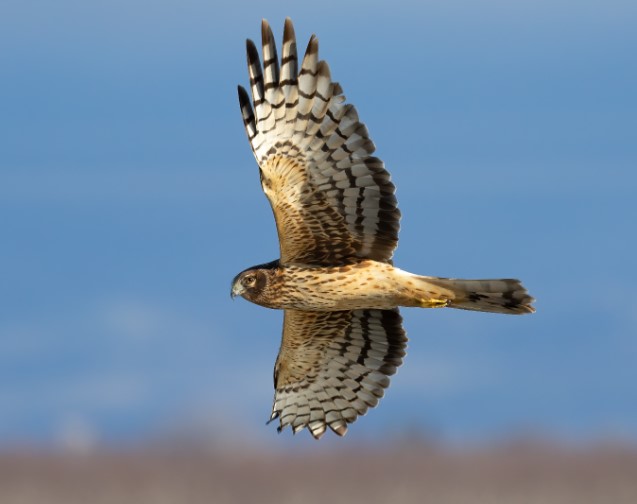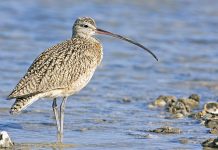Northern Harrier Hawk Call and Sound: The Northern Harrier Hawk is known for making a variety of calls, including an alarm call and a song. The alarm call is a high-pitched, sharp “kak-kak-kak” or “ki-yah,” which is often used to warn other harriers or nearby animals of potential danger. The song of the Northern Harrier is a series of whistles, often described as a “pee-yow” or “chew-chew-chew,” which is primarily used by males during courtship displays.
Additionally, Northern Harriers may also make other vocalizations, including a variety of chirps, whistles, and barks, which are used for communication between individuals. During courtship displays, both male and female Northern Harriers produce a rapid succession of kek notes, which last for 1 to 2 seconds. If threatened by nest predators or attacked by smaller birds, they use kek notes with a higher pitch.
The parents use alarm calls and talon strikes to fend off potential predators. During the breeding season, female Northern Harriers emit a piercing, descending scream known as the Food Call. This call is often repeated for several minutes and is used in the presence of a mate to induce food transfers, solicit copulation, or encourage the male to hunt. The food call may also be used by individuals attempting to steal prey from other harriers, as well as fledglings trying to get the attention of their parents.
In winter, territorial females use the Food Call while on the ground to ward off intruders or during evening display flights at communal roosts. When carrying prey back to the nest, males emit a barely audible, chuckling purrduk to solicit the female’s attention. Upon arriving at the nest with food, the female emits a soft, high-pitched Feeding Chuckle Call to summon and orient the nestlings for a feeding session.
Young nestlings have several begging calls, including a weak, monotonous peep and a variable, shaky preeeii. The young will emit these begging calls in response to seeing their parents fly overhead or when the female issues the food call within about 150 meters of the nest. Nestlings also produce a series of chit notes, referred to as a “pain” or “discomfort chitter,” which become more emphatic as they grow older. As the young birds fledge, their vocalizations begin to resemble those of their parents.

Family: The northern harrier (Circus hudsonius), also known as the marsh hawk or ring-tailed hawk, is a bird of prey that breeds in the northern regions of Canada and the United States.
Behavior: The species is known for its distinctive hunting behavior, where it glides low over open fields, marshes, and meadows in search of prey. Northern harriers feed primarily on small mammals, birds, and reptiles. They are characterized by their owl-like facial disc, which helps them to hear prey, and their long, narrow wings, which allow them to fly low and slow.
Status: The Northern Harrier is considered a species of conservation concern in many areas due to habitat loss and degradation. Conservation efforts are ongoing to protect this unique and valuable species.
Migration: During winter, the species migrates to more southerly regions, with those breeding in the northern areas moving to the southernmost United States, Mexico, and Central America. While they may be present year-round in milder regions of the southern US, they typically abandon higher elevations during winter.
Habitats: The northern harrier prefers to inhabit prairies, open areas, and marshes. Formerly, this bird was classified as a subspecies of the Eurasian hen harrier.
Size: Measuring between 41 to 52 cm (16 to 20 inches) in length and possessing a wingspan of 97 to 122 cm (38 to 48 inches), the Northern Harrier exhibits distinguishing male and female plumages. Male harriers typically weigh 290 to 400 g (10 to 14 oz), with an average weight of 350 g (12 oz), while females weigh 390 to 750 g (14 to 26 oz), with an average weight of 530 g (19 oz).







